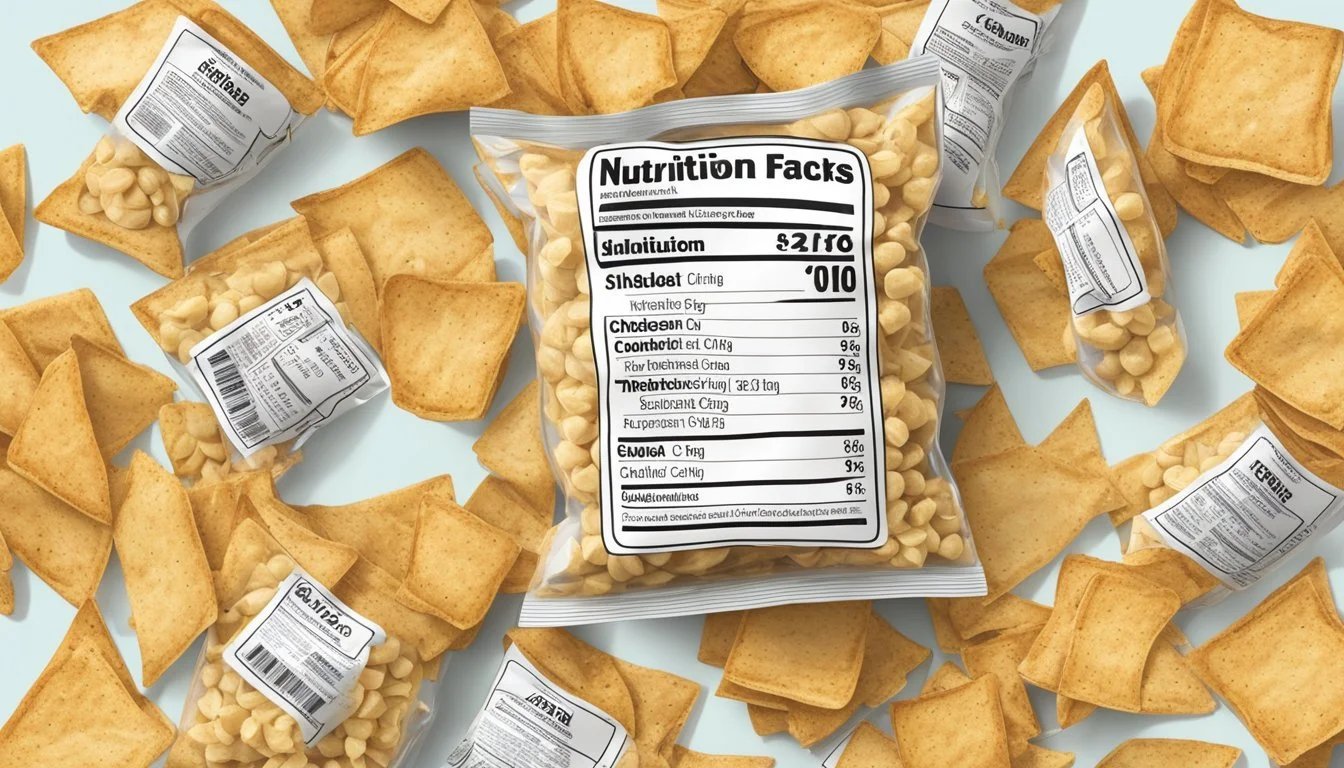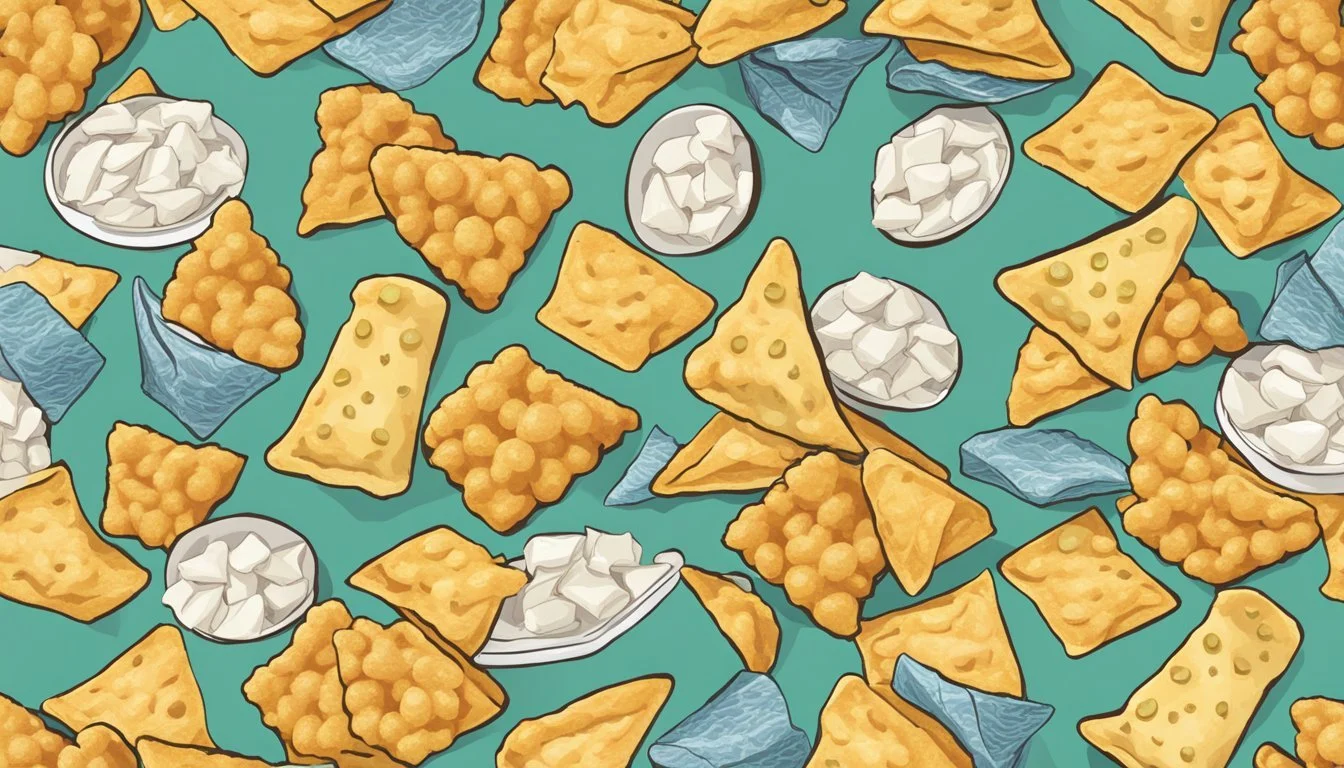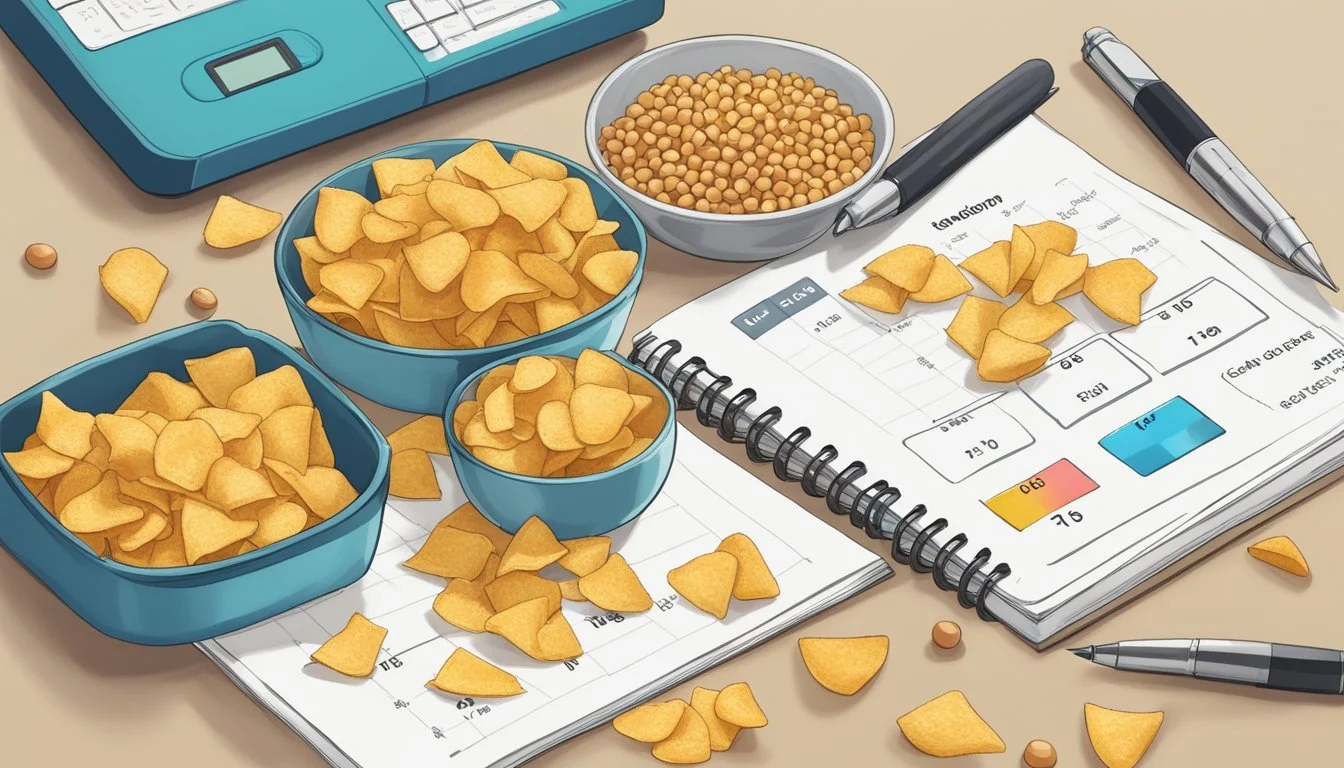How Many Servings of Kibo Chickpea Chips Is Too Much
A Nutritional Guide
When it comes to a healthy diet regimen, understanding portion control is key. Kibo Chickpea Chips provide a delicious and nutritious option for snacking, but knowing how many servings to consume is crucial. Moderation is important; consuming more than two servings of Kibo Chickpea Chips per day can contribute to excessive calorie and sodium intake.
Each serving of Kibo Chickpea Chips contains 110 calories, along with 15 grams of carbohydrates and 3 grams of fat. While these chips are a healthier choice compared to traditional potato chips, overindulgence can still derail diet goals. For individuals focused on maintaining a balanced diet, it's advisable to limit consumption to avoid unnecessary intake of fats and carbs.
It's important to consider how these snacks fit into your daily nutritional needs. With 210 mg of sodium per serving, eating too many can lead to surpassing the recommended daily sodium intake. The best approach is to enjoy Kibo Chickpea Chips in moderation while complementing them with other nutrient-rich foods throughout the day.
Understanding Servings and Portions
When considering how many servings of Kibo Chickpea Chips might be too much, it's crucial to understand the difference between a serving size and the actual portion consumed.
Serving Size and Daily Value
A serving size is a standardized amount of food. For Kibo Chickpea Chips, the serving size commonly referenced is 28 grams, or approximately one small bag. This size helps determine the amount of each nutrient a person will consume in one serving.
The Daily Value (DV) percentages shown on nutrition labels are based on these servings, reflecting how much a nutrient in a serving contributes to a daily diet. For example, a single serving of these chips provides 8% of the daily sodium intake.
Comparing serving sizes to recommended daily intakes allows consumers to better manage their overall nutrition. General nutrition advice suggests limiting sodium to less than 2,300 mg per day. Therefore, consuming multiple servings can quickly add up, making it easier to exceed daily nutritional recommendations.
Interpreting Nutrition Facts
Nutrition facts on packaging provide critical information about the content in one serving. For Kibo Chickpea Chips, a single serving offers 110 calories, 3 grams of fat, 15 grams of carbohydrates, and 6 grams of protein.
To make informed choices, consider how these numbers align with your nutrition goals. For instance, if aiming for a daily protein intake, each serving gives you 7% of the recommended daily intake.
Observing the amounts of sodium, fiber, and added sugars is just as important. For instance, this product contains 0 added sugars and provides 14% of the daily fiber requirement, which is beneficial for digestive health.
By understanding these labels, individuals can better gauge how many servings fit within their daily nutrition needs without exceeding recommended limits.
Nutritional Content of Kibo Chickpea Chips
Kibo Chickpea Chips offer a combination of nutrients that can make them a tasty yet health-conscious snack option. This section will break down the macronutrients and key vitamins and minerals contained in these chips.
Macronutrients Profile
Each 28g serving of Kibo Chickpea Chips typically has 110-120 calories. The protein content in one serving is about 6 to 7 grams, making these chips a notable source of plant-based protein.
Total fat in these chips stands at around 3 to 4 grams, which includes negligible amounts of saturated fat and zero trans fat. The sources of fat include vegetable oils such as sunflower, safflower, soy, or canola oil.
In terms of total carbohydrates, these chips contain about 15 grams per serving. Fiber content is around 4 grams, supporting digestive health, with no indication of added sugars. Sugars are minimal.
Vitamins and Minerals
Kibo Chickpea Chips provide essential micronutrients. One serving contains about 6% of the daily value for sodium or roughly 210 mg. Potassium levels are significant, at 299 mg per serving.
It contains moderate amounts of iron, although specific values aren't detailed in most nutrition facts. Important vitamins and minerals, such as calcium and magnesium, may also be present in trace amounts, supporting overall nutrition.
Given their nutrient profile, these chips can be a balanced snacking choice when consumed in moderation. Further examination of one's unique dietary needs and limits on sodium and fat intake will help determine the ideal serving size.
Comparative Analysis with Other Snacks
Kibo Chickpea Chips offer a nutritious alternative to many traditional snacks. This comparative analysis examines how they stack up against common options like potato chips, crackers, and healthier alternatives like air-popped popcorn and fruit bars.
Chips and Crackers
When compared to traditional potato chips, Kibo Chickpea Chips are lower in calories and fat. Standard potato chips typically contain around 150 calories and 10 grams of fat per serving, while Kibo Chickpea Chips have about 110 calories and significantly less fat. The chickpea chips also offer more protein and fiber, making them a more filling option.
Crackers often vary in their nutritional profile, with some being high in refined carbohydrates and low in fiber. Kibo Chickpea Chips surpass many crackers by providing a balanced macronutrient profile. With 7 grams of protein and 4 grams of fiber per serving, they contribute to prolonged satiety and better overall nutritional intake.
Healthier Snack Alternatives
Air-popped popcorn is another low-calorie snack, often containing around 30 calories per cup. While popcorn is lower in protein and fiber compared to Kibo Chickpea Chips, it remains a good option for those looking for a very low-calorie alternative. Popcorn can be less satisfying due to its lower protein content.
Pretzels are generally low in fat but can be high in sodium and offer minimal protein and fiber. Kibo Chickpea Chips not only provide a healthier balance of macronutrients but also avoid the high sodium content typically found in pretzels, making them a better choice for those monitoring salt intake.
Trail mix offers a mixed bag of nutrients, with nuts adding healthy fats and protein but also increasing calorie content. Comparatively, Kibo Chickpea Chips provide a consistent and lower-calorie snack with controlled portions of protein and fiber, avoiding excessive fat and calories.
Leather fruit bars are low in fat but can be high in sugars, offering quick energy. Kibo Chickpea Chips, while slightly lower in quick energy, provide a more balanced nutritional profile which can be better for sustained energy levels.
This comparison highlights that Kibo Chickpea Chips stand out in terms of providing a balanced and nutritious option among various snack choices.
Kibo's Brand and Product Range
Kibo Foods offers a variety of nutritious snacks and meals that cater to plant-based diets. The following subsections highlight the brand's product offerings and the unique ingredients and flavors they incorporate.
Kibo Product Offerings
Kibo Foods focuses on creating snacks and easy meal options that align with a healthy, plant-based lifestyle. Their products include chickpea chips, lentil chips, and pea protein meals.
Kibo chickpea chips come in flavors like Pico De Gallo and Mediterranean Herbs, providing both classic and adventurous taste options. Their lentil chips feature an oval shape and a light, crispy texture, offering an alternative to traditional snacks.
These products are marketed not only for their flavors but also for being high in protein and low in calories, carbs, and fat.
Special Ingredients and Flavors
Kibo incorporates high-quality ingredients to ensure their products are both tasty and healthful. Key ingredients include chickpea flour, rice flour, soybean protein concentrate, and tapioca starch. These components contribute to the high protein content and appealing texture of their snacks.
Each chip flavor uses distinctive spices and natural elements. For example, chickpea chips with Mediterranean Herbs provide a savory blend of spices, while the Pico De Gallo flavor offers a zesty, tangy profile. Himalayan Salt is also used to enhance taste without adding unnecessary sodium.
The emphasis on nutritious ingredients makes Kibo an attractive brand for health-conscious consumers seeking delicious plant-based options.
Health Considerations
When thinking about how many servings of Kibo chickpea chips is too much, it is crucial to consider how they fit into your daily nutritional needs and specific dietary restrictions.
Moderation and Balance
Eating Kibo chickpea chips in moderation is key. A single serving contains 110 calories, 3g of fat, and 190mg of sodium. Consuming multiple servings could easily exceed daily recommended intakes for sodium and fat, especially polyunsaturated fats.
Chickpea chips are high in plant-based protein and offer essential amino acids, contributing to muscle maintenance and overall health. However, overindulgence can offset weight loss efforts by contributing excess calories. Balancing snacks with whole foods like fruits and vegetables ensures a well-rounded diet and supports regular bowel movements due to fiber content.
Special Diets and Restrictions
For those on specialized diets, Kibo chickpea chips can be a suitable option. They are ideal for a vegan diet as they are plant-based and rich in choline. Individuals on a low-sodium diet should monitor intake closely, as the chips contain 190mg of sodium per serving.
People following gluten-free regimens can enjoy these snacks as they are gluten-free. However, always check for any allergens if you have specific dietary restrictions. Ensuring variety and portion control in your diet regimen helps maintain a balanced nutrition plan and prevents unwanted health issues.
Food Diary and Calorie Counter Tools
Using food diary and calorie counter tools can help individuals better manage their consumption of Kibo Chickpea Chips and other foods. These tools provide insights into nutritional intake and support informed dietary choices.
Tracking Consumption
Tracking consumption plays a vital role in maintaining a balanced diet. Food diaries allow users to log every meal or snack, detailing the type, quantity, and nutritional value of each item.
FatSecret is a popular option that includes a vast food database. Users can quickly find and enter items like Kibo Chickpea Chips.
Maintaining a consistent record helps identify patterns and potential overeating. For instance, noting how many servings of chips are consumed each day can prevent excessive intake. Tracking can be done using apps or traditional journals, depending on user preference.
Using Technology for Diet Management
Technology simplifies diet management by providing tools that automate the tracking process. Calorie counter apps estimate daily intake and expenditure, aiding in weight management and nutritional planning.
Apps such as FatSecret have extensive food databases, including branded items. Users can scan barcodes or browse the database to find foods like Kibo Chickpea Chips. These tools often offer nutritional breakdowns, detailing calories, fats, proteins, and other essential nutrients.
Users receive personalized feedback, making it easier to adjust consumption patterns. Technology offers convenience and precision, enhancing the ability to stick to dietary goals while enjoying favorite snacks responsibly.







